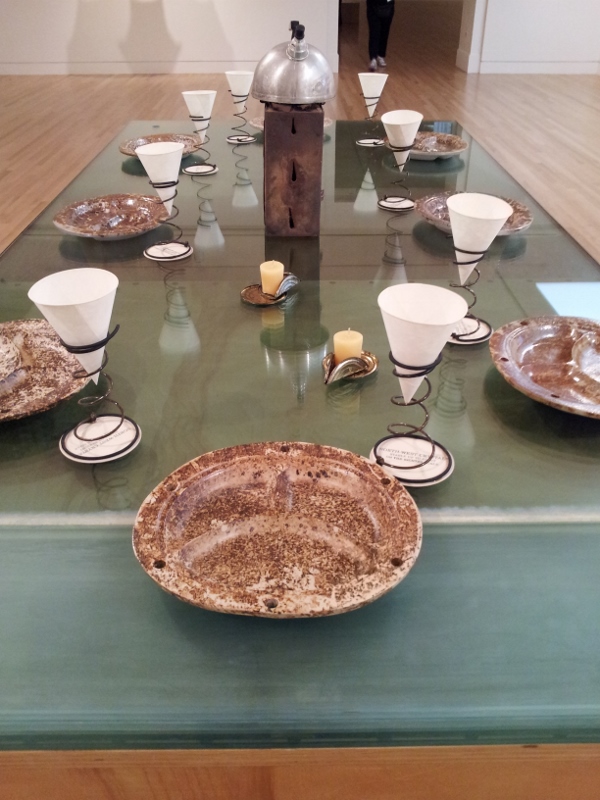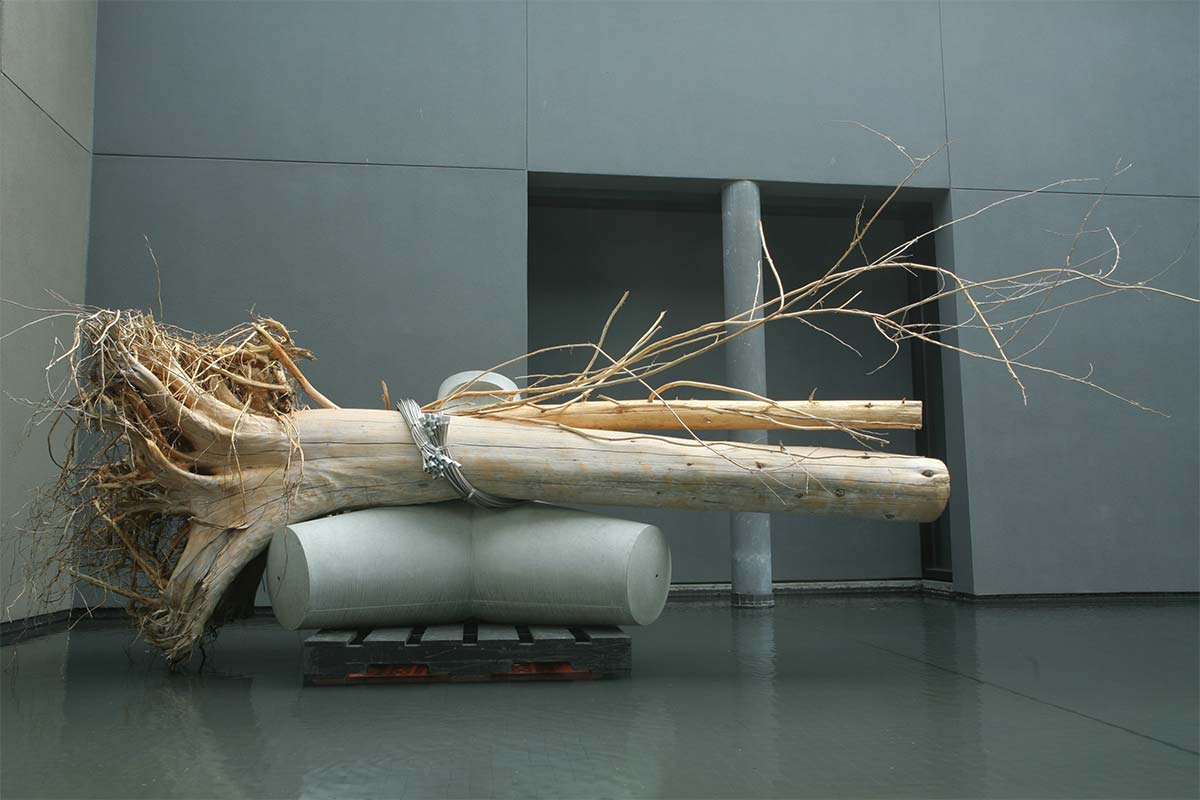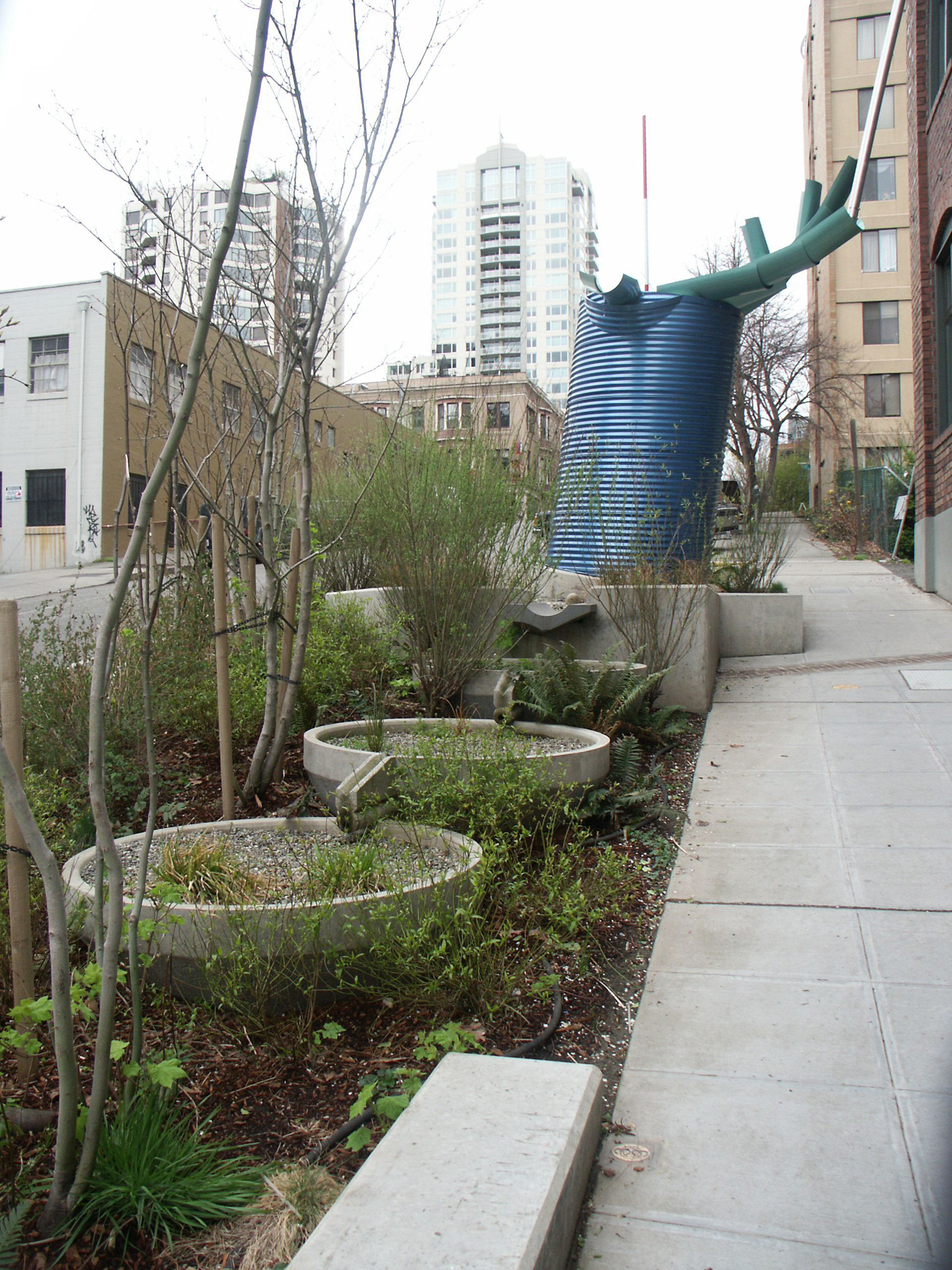These are excellent sources to follow up with if you are at all interested in Buster Simpson, nurse logs, or both.
Allan, Lois. Contemporary Art in the Northwest. Roseville East, NSW: Craftsman House, 1995. Print.
This book provides an overview of relevant and well-known artist in the Northwest. Buster Simpson’s works Exchanger Fountain, Host Analog, and Seattle George Monument are covered here.
Bloom, Brett, and Ava Bromberg, eds. Belltown Paradise: The Belltown P-Patch, Cottage Park, Growing Vine Street, Buster Simpson ; Making Their Own Plans: City Repair, Resource Center, Park Fiction, Can Masdeu. Chicago, IL: WhiteWalls, 2004. Print.
This short volume is focused on a specific region of Seattle that the editors believe to be both culturally and artistically significant. The section concerning Buster Simpson makes emphasizes Buster’s projects that are time based and involve growing materials.
“Buster Simpson on “Secured Embrace” at The Frye Museum.” YouTube. YouTube, 3 July 2013. Web. 06 Feb. 2016.
In this brief video, Simpson responds to questions about his recent piece Secured Embrace. He equated the anthropomorphic concrete structures holding the root wad to the actions of the Woodman caressing the wood he has scavenged from the city. He also remarks that this work is art now, but it is intended to serve a functional purpose later on. I would add that the functional purpose is magnified because the messages discussed in its will continue to speak to people even when it is performing restoration functions.
Fukasawa, Yu. “Effects of Wood Decomposer Fungi on Tree Seedling Establishment on Coarse Woody Debris.” Forest Ecology and Management 266 (2012): 232-38. Web of Science. Web.
This paper discusses the theory that seedlings are more prevalent on nurse logs there is smaller density of accumulated forest litter. It also reports the findings that small seeds are more likely to thrive on nurse logs than large seeds and considers the relationship between different species of fungi and seedling density on nurse logs.
Glowen, Ron, and Kim Levin. Glass: Material in the Service of Meaning. Seattle: Tacoma Art Museum in Association with U of Washington, 1991. Print.
This book covers the history of a several different artists and their pioneering works with glass. Buster Simpson was going to art school during the time the ONCE art group was popular, and they are known for working with a variety of media, including glass. Simpson has done some work with glass, but that is not the focus of this project.
Graves, Jen. “Simpson, Buster (b. 1942).” HistoryLink.org- the Free Online Encyclopedia of Washington State History. HistoryLink.org, 18 Sept. 2013. Web. 17 Jan. 2016.
Jen Graves, writer for The Stranger, traces the development of Buster Simpson’s artistic career, highlighting key projects. His relationship to other artists, the public, and the city of Seattle are also discussed.
Kangas, Matthew. Epicenter: Essays on North American Art. New York, NY: Midmarch Arts, 2005. Print.
This book is a collection of short overviews of influential artists in North America. The foucs is more on biography and examples than overarching theory. The included essay on Buster Simpson, Green Interventions, highlights Simpson’s ability to make lasting social statements, most often with a lighthearted, humorous or ironic touch, by employing incredibly unique solutions to urban problems.
Lawrimore, Scott, ed. Buster Simpson // Surveyor. Washington: Frye Art Museum, 2013. Print.
This book is a broad look at the extensive career of Buster Simpson. The main focus of the work is on his work that has found its way into a museum, although some of his earlier, edgier projects are covered as well. Of particular interest to me is the included discussion about Simpson’s alter ego, the Woodman. This book is more comprehensive than other sources and presents the most holistic view of Simpson and his work.
Marcuvitz, Shel. Nurse Logs in a Coastal Oregon Forest. Portland: Reed College, 1985. Print.
This is a thesis presented to the Department of Mathematics and Natural Sciences of Reed College. It gives a detailed overview of the science of nurse logs and how they interact with the forest. Its primary findings discuss the incredibly complex challenge of understanding why some seeds grow on nurse logs. The possible theories of decreased competition due to the absence of forest growth, less litter on nurse logs than on the forest floor, and the movement of seeds by small forest creatures are all considered.
Matilsky, Barbara C. Fragile Ecologies: Contemporary Artists’ Interpretations and Solutions. New York: Rizzoli International, 1992. Print.
This volume is a general survey of contemporary environmental artist, but it goes more in to detail for each individual artist than some of the other books on this list. In terms of relevancy to my project, the writing on Host Analog will be utilized, as will the coverage of King Street Gardens and Downspout. The main narrative put forward in the section about Simpson in this book is that individual actions can resonating impacts on urban environments.
Miller, Brian. “Visual Art: Buster Simpson at the Fry.” Seattle Weekly News. Seattleweekly.com, 30 July 2013. Web. 16 Jan. 2016.
Brian Miller writes on the non-permanence of Buster Simpson’s work and asks what that means for collectors of his work. He addressed Simpson’s working style of using recycled materials to create art and on designing projects with some sort of environmental bent.
Oakes, Baile, ed. Sculpting with the Environment: A Natural Dialogue. New York: Van Nostrand Reinhold, 1995. Print.
This book opens with essays by three noted scholars on topics related to the contemporary environmental movement. This work covers three of Simpson’s works, Host Analog, Exchanger Fountain, and Seattle George Monument. This book focuses in more on the poetic statements made by these works than other sources.
Raunekk “What Are Tetrapods? (Tetrapods Resist Wave Impact and Prevent Beach Erosion).” Brighthub Engineering. Bright Hub Engineering, 23 Sept. 2009. Web. 20 Jan. 2016.
This is a quick overview of what tetrapods are, how they work, and the controversy surrounding them.
Sanchez, Evelyn, Rachel Gallery, and James W. Dalling. “Importance of Nurse Logs as a Substrate for the Regeneration of Pioneer Tree Species on Barro Colorado Island, Panama.” J. Trop. Ecol. Journal of Tropical Ecology 25.04 (2009): 429. Web of Science. Web.
This article discusses the fact that in some forest, nurse logs are less common and do not serve as often as recruitment sites for seedlings. Despite this, the article points out that nurse logs often function as establishment sites for seedlings that cannot survive on the forest floor, thereby adding to the biodiversity of the forest.
Seattle Art Museum. The Effluence of Affluence. Seattle: Seattle Art Museum, 1991. Print.
This brief document was part of series that the museum did as part of the Documents Northwest series. Despite its brevity, this source is unique in that its focus is on Buster Simpson not as a public artist, but as a maker of socio-political statements through art making. The Simpson presented here is more interested in conveying direct messages than in subtle statements, as was true of his later work.
Szewczyk, J. “Tree Regeneration on Rotten Wood and on Soil in Old-Growth Stand.” Vegetatio 122.1 (1996): 37-46. JSTOR. Web. 06 Feb. 2016.
This sources tests and discusses the theory that nurse logs are better seedbeds than the forest floor for the trees in the Barbia Gora National Park. Other findings include that the sustainability of canopy trees depends on the cycles of death and decay of nurse logs in the forest.
Thompson, Nato. Living as Form: Socially Engaged Art from 1991-2011. New York, NY: Creative Time, 2012. Print.
This volume presents an extremely wide range of different artists and the myriad approached they take to the making of social statements with art. Buster Simpson is only given two pages in the work, but the sources is still relevant because the author makes a connection that I have not encountered in any other source up until this point. They point out that, in their discussion of Growing Vine Street, that art can provide the necessary hub for scientific innovation.
Wilson, William. “ART REVIEW : ‘Fragile Ecologies’: Working to Keep the Green Green.” Los Angeles Times. Los Angeles Times, 05 Aug. 1994. Web. 20 Jan. 2016.
William Wilson reviews the provocative artists (Buster Simpson being one of them) in a new show “Fragile Ecologies”. He considers what statements these artists make about consumerism and humanity’s effect on the environment and how these messages diverge from the traditional visual and experiential escapism that has come to be associated with fine art.























